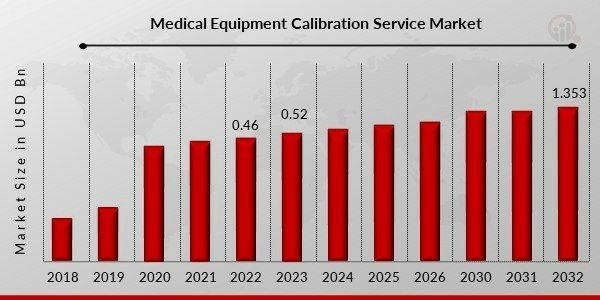The Hidden Risk in Hospitals: Why Medical Equipment Calibration Could Save Your Life
As per MRFR analysis, the Medical Equipment Calibration Service Market Size was estimated at 4.9(USD Billion) in 2023. The Medical Equipment Calibration Service Market Industry is expected to grow from 5.21(USD Billion) in 2024 to 8.80 (USD Billion) by 2032. The Medical Equipment Calibration Service Market CAGR (growth rate) is expected to be around 6.77% during the forecast period (2024 - 2032).

Would You Trust a Broken Thermometer?
Imagine walking into a hospital, getting your blood pressure checked, and receiving a completely incorrect reading—without anyone knowing. Sounds terrifying, right?
Now, think about the countless medical devices hospitals rely on daily:
???? Ventilators keeping ICU patients alive
???? MRI machines detecting life-threatening diseases
???? Infusion pumps delivering critical medications
What if even one of these machines was slightly off? That’s the silent danger of uncalibrated medical equipment.
What Is Medical Equipment Calibration and Why Does It Matter?
Medical devices wear down over time—sensors drift, batteries weaken, and small misalignments occur. Calibration ensures that every reading, dose, or scan remains precise, preventing medical errors that could mean the difference between life and death.
Regular calibration helps:
✅ Ensure accurate diagnoses – A miscalibrated blood glucose monitor could lead to the wrong insulin dosage.
✅ Improve patient safety – Incorrect readings on defibrillators or ventilators can be fatal.
✅ Meet regulatory standards – Hospitals must comply with strict guidelines like ISO 17025 and FDA requirements.
The Alarming Reality: How Often Are Devices Actually Checked?
Despite the risks, many hospitals overlook calibration schedules due to cost or time constraints. Studies have shown that nearly 15% of medical devices in hospitals operate with calibration errors, leading to misdiagnoses, treatment delays, and even lawsuits.
???? Real-Life Case: In 2022, a miscalibrated radiation therapy machine overdosed several patients, causing severe side effects. This could have been avoided with proper calibration.
Medical Equipment Calibration Service Market Overview
As per MRFR analysis, the Medical Equipment Calibration Service Market Size was estimated at 4.9(USD Billion) in 2023. The Medical Equipment Calibration Service Market Industry is expected to grow from 5.21(USD Billion) in 2024 to 8.80 (USD Billion) by 2032. The Medical Equipment Calibration Service Market CAGR (growth rate) is expected to be around 6.77% during the forecast period (2024 - 2032).
AI and Automation: The Future of Medical Calibration
With advancements in artificial intelligence (AI) and IoT (Internet of Things), calibration services are evolving:
???? Self-calibrating equipment – Smart devices now adjust automatically, reducing human error.
???? Remote monitoring – Cloud-based calibration services allow technicians to check equipment without physical inspections.
???? Predictive maintenance – AI can predict when a machine is about to fail, preventing breakdowns before they happen.
What Can Hospitals and Clinics Do?
To avoid medical errors and stay compliant, healthcare providers must:
✔ Follow a strict calibration schedule for all medical devices.
✔ Use certified calibration services that meet regulatory standards.
✔ Invest in smart medical equipment that offers real-time calibration updates.
The Bottom Line: Accuracy Saves Lives
Whether it’s a simple thermometer or a complex MRI scanner, medical device calibration isn’t optional—it’s essential. As technology advances, ensuring precision in healthcare will become more automated, data-driven, and life-saving.
???? Next time you visit a hospital, remember—behind every accurate diagnosis is a well-calibrated machine!
For more information, please visit @marketresearchfuture
What's Your Reaction?












